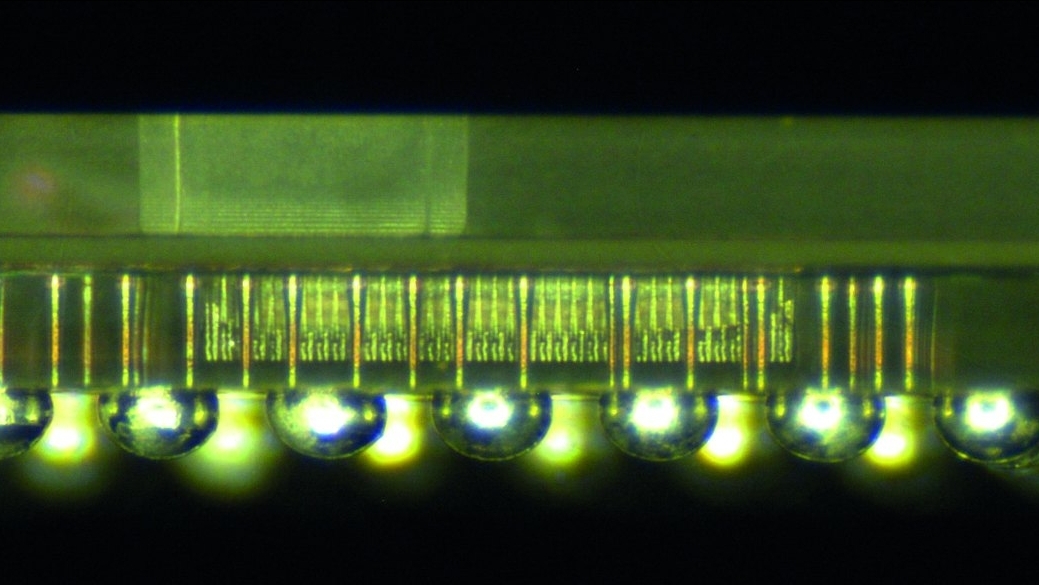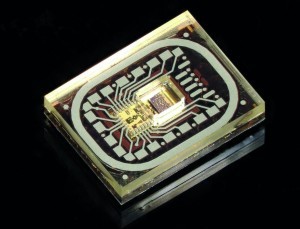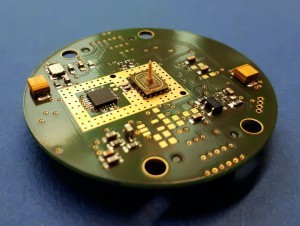Seven partners are working as a consortium on the BMBF-funded GlaRA research project: glass interposer technology can, for example, integrate radar sensors into sensor ASICS and enables the cost-effective production of medium quantities.
Seven partners are working as a consortium on the BMBF-funded GlaRA research project. The glass interposer technology can integrate radar sensors into sensor ASICS, for example, and makes it possible to manufacture medium quantities at low cost.
In order to remain competitive in the Internet of Things environment, even medium-sized industrial and process measurement technology companies are increasingly having to integrate their sensor circuits into ASICs (Application Specific Integrated Circuits). The semiconductor industry is currently meeting this demand with lower costs for development cycles and decreasing quantity hurdles. This is not happening sufficiently in chip packaging. As a result, ASICs that require individual packages can run the risk of failing due to the quantity hurdles of the predominantly Asian package service providers. A consortium of seven partners from industry and research is now offering a solution.
A good example of the above-mentioned requirement profile are the radar sensors for industrial and process measurement technology realized in the BMBF-funded project 'Glass interposer technology for the realization of highly compact electronic systems for high-frequency applications' (GlaRA). The higher frequencies of >100 GHz compared to mobile radio technology and the stricter environmental requirements rule out standard packages. They must be adaptable to specialized sensor ASICs and at the same time be realizable at competitive costs in medium quantities.
Revolution for sensor packaging
The consortium has developed and characterized a reliable interposer technology based on glass for broadband millimeter wave modules with applications in sensor technology and communication at frequencies above 100 GHz as a system-in-package (SiP). The demonstrated technology kit represents a revolution in sensor packaging: Compared to the state of the art, it increases the functionalities that can be integrated through various waveguide concepts, high-density micro-wiring and hermetic encapsulation. It also enables applications up to 300 GHz thanks to its high accuracy and material qualities. This is realized within a single material system (glass) through excellent waveguide properties and high-precision micromachining, among other things.
By using glass interposers with electrical feedthroughs (vias), hermetic packaging was demonstrated in which the components are enclosed between two glass interposers. The packages are produced at wafer level up to 300 mm in diameter. Wafer-level packaging is characterized by moderate costs due to the parallel processing of many components and alignment accuracy within the tight tolerances of HF technology. Adapted standard systems from the processing of silicon wafers are used for this purpose, which greatly accelerates commercial implementation. Glass is also available in large panel formats, making it much easier to scale up to large quantities.
The results are an extraordinary success for an R&D project funded by the BMBF. The consortium demonstrates this using an extremely compact radar front end for future radar level sensors at an operating frequency of 160 GHz, which was built at Endress+Hauser AG. The glass package measures a tiny (5.9 x 4.4 x 0.8) mm³ and contains a radar ASIC in SiGe technology, all electrical connections for interfacing to external electronics, test structures for characterization and a waveguide connection that can also be used as an integrated primary radiator for a lens antenna. Such future level sensors are characterized by high distance resolution, measuring accuracy and beam focusing with very compact dimensions. They are therefore highly interesting for smart process measurement technology systems, which are becoming ever smaller and more modular.
The demonstrators were realized using a new type of process chain that begins with the revolutionary laser-induced deep etching (LIDE) process from LPKF Laser & Electronics AG. The process for creating microstructures in glass avoids damage to the material, making a manageable and hermetic glass package possible in the first place. The Fraunhofer Institute for Reliability and Microintegration has developed an industrial process for metallizing glass vias with high aspect ratios. In a wafer bonding process, the assembled components are hermetically packaged by connecting two glass wafers, each of which has vias and cavities.
PacTech GmbH structures and metallizes the conductor tracks on the glass substrates. The placement of solder deposits on the contact surfaces generated without external current is realized using PacTech's SB² process, a laser-assisted method for the sequential application of solder balls. Different alloys are used to enable staggered assembly at different temperatures. MSG Lithoglas GmbH supports the realization of the high-frequency packages by producing cavities that are used, for example, to hold the ASICs. High-precision glass spacers are also produced by means of low-temperature coating.
With a high-frequency concept for the new package developed by the Institute for Microwave Technology at the University of Ulm, the radar signal at over 100 GHz can both directly illuminate a lens via a primary radiator and be guided to a remote antenna with low loss via a flexible dielectric waveguide. The various options for emitting the radar signals from the package can be used for a wide range of applications. Sentronics Metrology GmbH has developed a 3D high-speed sensor with layer resolutions in the sub-nanometer range for quality control. Among other things, the sensor has been qualified for leak testing of encapsulated, evacuated glass packages.
The industrial partners are very interested in the future commercial availability of the technology. They see potential for many other areas of application such as pressure measurement technology, fluid analysis, photonics, MEMS, medical technology and communication technology beyond 5G.
The GlaRA funding project was funded by the BMBF from August 2017 to March 2021 under the reference 16ES0687K as part of the TechSys call for proposals.
www.uni-ulm.de/in/mwt
www.izm.fraunhofer.de
www.de.endress.com/de
www.lpkf.com
www.pactech.com
www.lithoglas.de
www.sentronics-metrology.de




